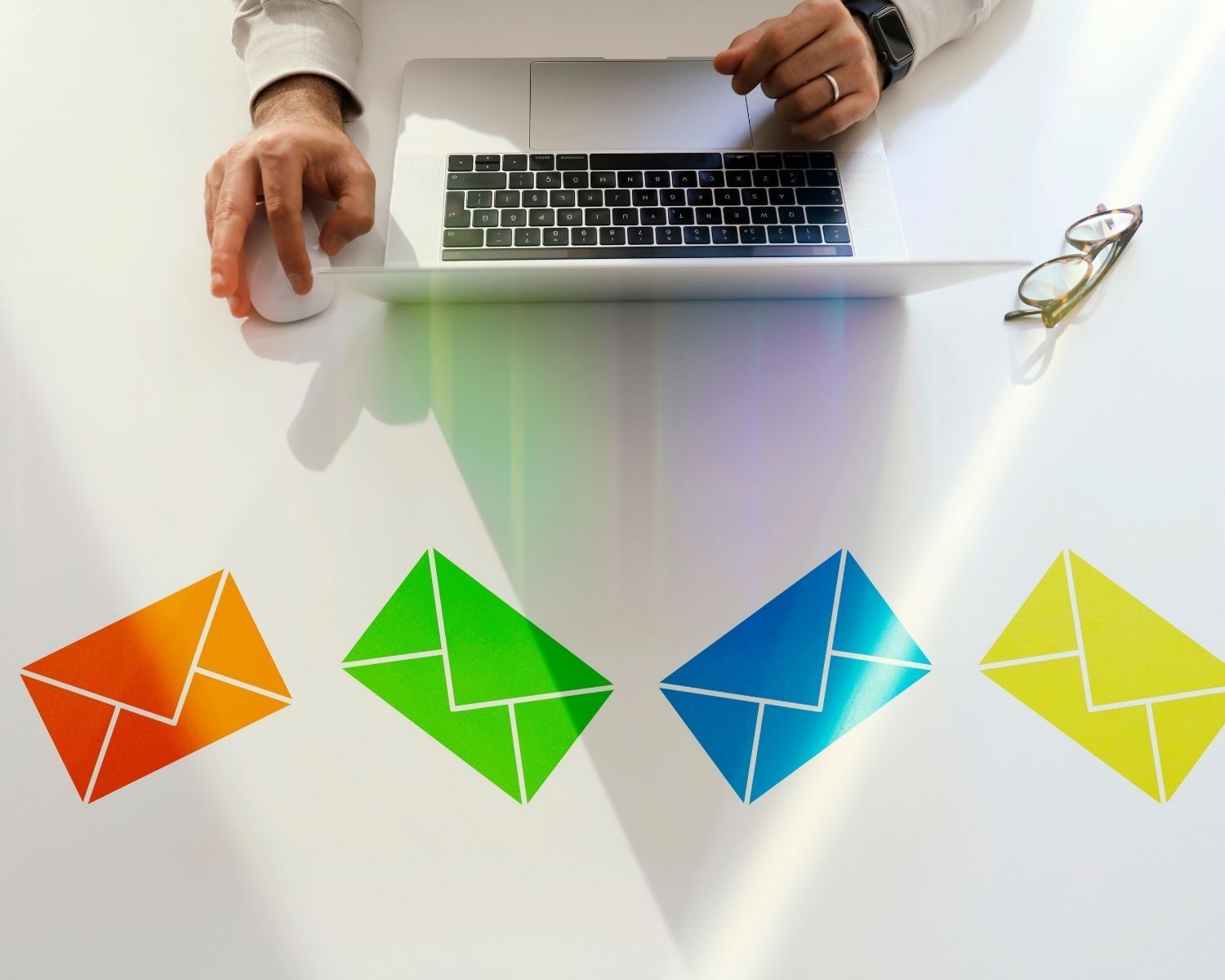Digital marketing is constantly evolving to a point that there are now new ways your brand can invest to reach your target audience.
There’s outbound marketing, content marketing, search engine marketing, social media marketing, video marketing, influencer marketing, and affiliate marketing, among others. With all of these current, fresh digital marketing channels, you may ask: Is email marketing still a worthy investment?
Well, the plain and simple answer is: Yes, of course!
Even with all the innovative marketing ways in the market today, emails still hold value. Some marketers may not even be aware of this, but email marketing can generate 122% ROI, according to eMarketer.
Yup, that’s not a typo. That’s really 122% (median email marketing ROI) and it applies to all businesses, whether big or small because ROI is scalable.
Now that you know email isn’t going anywhere, we’ll now determine the average ROI of email marketing campaigns and why does email marketing ROI matter. After that, we’ll share with you a few hacks on how to boost your ROI!
Interested now? Here we go!
Average Email Marketing ROI
For every $1 email marketers spend on email marketing, they get an average of $36 in return.
To calculate ROI in email marketing, it requires a simple equation. Just subtract the money you gain from the money you spent on email marketing. Then, divide that by the money present. Here’s the simple equation:
(Gained – Spent) / Spent = ROI
But remember that this email marketing ROI average is not guaranteed. Spending thousands of dollars on email marketing doesn’t always mean you will get 36 times that amount back.
Why? It’s because sales are not the only profit that results from emails. You may gain an advantage on other metrics, which are also important in determining the value you derive from your email marketing efforts.
These can be in the form of website traffic, lead acceleration, engagement, conversion rate, or a better click-through rate.
To track your monthly performance, we suggest you do regular email reporting to compare over time and see how effective email marketing strategy works or what part of your email marketing campaigns are improving.
Now, let’s discover real tips and tricks to boost your email marketing ROI…
7 Hacks to Boost Your Email ROI
1. Run A/B Tests on Your Email Marketing Campaigns
If you are not yet taking advantage of A/B testing, then you should. It is a form of testing that enables brands to measure the success of their campaign without investing in significant overhauls.
But, how do you do it?
Simple. Just send one variation of your email campaign to a group of your email subscribers and another email variation to another subset of recipients. Your goal should be to choose the variation that garners the best results.
It could be as simple as using different templates or changing subject lines to see which emails generate more opens or more click-throughs.
Take note that it’s impossible for every individual out there so running A/B tests can help you target your specific audience, which, later on, leads to better email marketing ROI.
Besides the subject line and the preheader text, we also encourage you to test your call to action.
Some factors that you have to consider when testing your CTA include the copy (including a first-person copy), the shape of the button rather than just simple “click here” (Yup, this matters too!), and the color scheme of your CTA buttons.
2. Use Dynamic Email Content
Dynamic email content is a personalized part of your mass message that changes based on the data about your subscribers or the user behavior itself.
This requires marketers to add variables in their mailing list or group them based on their characteristics, age, gender, location, etc.
Tailoring your message to the recipient will help increase your conversion rates, and eventually your email marketing ROI. Let’s say, you’re using Mailchimp in your campaigns.
With dynamic content, you can show the right message to the right people but in a single email. This saves you a lot of time and helps prevent your Mailchimp emails from going to spam because you are sending the email to the recipients who are interested in what you have to offer.
3. Utilize Live Content
Some email content is evergreen and remains relevant until whenever the recipient opens your email. However, some have a limited lifespan that after a certain period, they become less useful or worse, completely useless.
But with live content, you can make sure that your email content remains fresh regardless of when your email campaign is opened. This great email marketing strategy gives digital marketers a better ROI and a competitive advantage over their competitors.
But, what is live content, anyway? It’s actually an email in the form of image, video-based, or animation that is conditionally displayed in the email using information that is not known until the message will be opened by the subscriber.
Live content works by adding a regular “non-live” text in the final email HTML via <img> tag. The email will just then be deployed as normal by you (the sender) using the standard process.
Yet, when the email is opened by the recipient, the live content <img> in your email HTML will be requested from the server of the live content provider.
Live content use cases
Some of the use cases of live content that deliver the biggest impact include:
- real-time inventory,
- account dashboards,
- live countdown timers,
- local maps,
- social media feeds,
- local weather,
- live sports scores (or medal counts),
- calendar invites,
- device targeting, and
- live poll results
4. Leverage Animated GIFs
Animated GIFs can add levity and humor to your email campaigns and help you boost your website traffic. Although it may not be the most professional email format, it is now gaining popularity and should be a part of your marketing efforts.
Graphics Interchange Format (GIF) is an email format that grabs the audience’s attention. By adding motion to an image, you are pointing them towards an action that you want them to take.
In fact, when Dell’s email strategist David Sierk used this technique in 2012, it resulted in a 109% boost in revenue and a 103% increase in conversion.
However, don’t overdo this digital marketing strategy. A 2020 study by Nielsen shows that many people still like emails without GIFs.
Wait, what? Doesn’t it clash with the result that Dell achieved?
Well, not exactly. You just have to play it correctly. For instance, keep your file size down. Tools, like Photoshop and Adobe Animate, have compression options to keep your GIF to its optimum weight.
Another technique is to use flat colors. Including gradients or photography in your animation only adds weight because of the amount of shades and colors they contain. When it comes to frame, the shorter your animation, the better. This is because each frame your GIF animation contains also adds weight to the GIF.
5. Have an Extensive Checklist for Every Email Report
Before you even consider your next email content, it is important to have an extensive checklist for every email report so you’ll have a successful email campaign every time.
Thorough reporting can help you spot your strengths and weaknesses. Be that the images you use, the calls to action, your preheader text and footer, the subject line, sender name, and who your recipients are.
Be sure to also add new messages to your spreadsheet and record the performance of your email marketing campaigns on basic metrics, such as the open rate, conversion rate, and click-through rate.
6. Use Email Analytics Tools
The use of email analytics tools should likewise be a part of your digital marketing tactics. Why is it important, you ask? It’s because email converts users or visitors into customers.
So, you may use an email marketing software or email report tool to have an in-depth or detailed overview of who receives, clicks, opens, or reports the emails you sent. Let’s also not forget email delivery as the ultimate metric.
A Google Analytics account, for instance, can be used to track emails. But, email analytics tools that come with email marketing software are usually the most cost-effective and easiest way to track the success of your email marketing success.
The types of email analytics we recommend you to track include email open rate, click-through rate, bounce rate, and unsubscribe rate. Consider also the following:
- Email reading time – Some analytics tools allow you to check the amount of time recipients spend reading your message.
- Engagement over time – This metric monitors when emails are opened and clicks to give you a better idea of when is the most efficient time you should send your next email to a certain audience.
- Overall revenue or ROI per email – This sales metric is calculated based on the campaign results.
- Email client-related open rates and devices – This helps you optimize the design of your email marketing campaigns accordingly based on the device used by the recipients.
- Email engagement – This metric includes link sharing to social media and email forwarding.
7. Apply Email Marketing Automation
When it comes to increasing your email marketing ROI, email marketing automation is still one of the best practices. Not only will it make your company more efficient, but it also improves your overall email deliverability.
If you have an automated email campaign, it’s easy to optimize when to send your emails as well as remarketing them to people who have previously purchased from you or your website visitors.
One of the best applications of email marketing automation is an abandoned cart email. In fact, you can send it in just an hour after someone left your site.
Aside from abandoned cart email, other use cases of email marketing automation are scheduling reminders at a certain time for a particular event, cross-selling or up-selling, setting up drip campaigns, and offering personalized customization.
By using email automation, you trigger an email campaign by a specific action or inaction after a certain time of the buyer’s journey.
Looking for some more real life examples? Here are 30 email marketing tips from domain experts on how they boost ROI for their own email marketing campaigns!
Email Marketing is Still Worth the Investment!
Email marketing is not a dead art and is still worth the investment. Sure, other channels may rise in popularity, but when it comes to promotional and regular content as well as brand awareness, direct emailing still works.
In fact, a global study on consumer engagement best practices for 2020 shows that 83% of consumers still prefer to receive communications over email and email is where you’ll reach mobile users the most!
Now that we have a better understanding of what is the ROI of email marketing and how to increase your company’s revenue through it, we hope you’re taking the next step in growing your business.
Photographers, in particular, can set themselves apart with tailored designs. For instance, using photographer email templates can help showcase your portfolio and captivate potential clients in a visually stunning way.
And in case you’re not, we at InboxAlly have a team of email marketing experts ready to help create and implement an email strategy that works.
Rooting for you!

